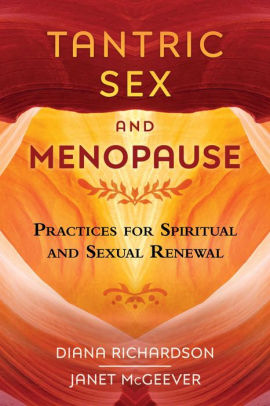All around us we are given images of supernaturally perfect people getting older and enjoying life just as we did when we were younger. We are encouraged to "live juicy," to co-create a loving relationship full of sexual heat and desire. In this mythology, menopause is a relief from the problems that come from fear of pregnancy, a signal that now – finally – we can have guilt-free sex all of the time. And we should want to have sex because we are taught that the best way to show your partner you love them is through sexual contact. Yet many menopausal and peri-menopausal women feel such a lack of desire for sex -- and not because they are tired or lack the time -- that they end up thinking they are a failure because they are not living up to the image. Moreover, men and women both are rarely taught how to make love. Instead we are shown, over and over again, that sexual contact must always lead to a climax and is best achieved through stimulation of the primary sexual organs.
Diana Richardson has spent 25 years teaching couples about sex as a form of meditation where longing and attraction don’t die. Janet Mc Geever has been teaching How to Make Love, based on Richardson's previous writings for the last six years. These women literally teach what they preach and are wildly popular. Their co-creation Tantric Sex and Menopause is revolutionary, loving, mindful, and transformative. For them, Tantra is the transformation of sex into love, and it happens through the awareness. The sex energy then becomes meditative energy and love grows. Using the principles of tantra, they have created a practice of mindful sex.
In mindful sex there are no goals -- including climax. You (and your partner if you have one – mindful sex can be practiced solo) get to relax all of the way through. There are nine principles to follow:
- Make a date to come together mindfully and for several hours. (If you normally go out to see a movie, or have dinner, use that time instead to come together for sex. The authors note that this can be especially freeing for women who take much longer than men to grow aroused and feeling sexual.)
- Agree to be as aware and present as possible.
- Continually scan your body for relaxation. Note places of tension and consciously relax them.
- Breathe deeply and slowly into the belly and genitals.
- Enter the body very slowly, millimeter by millimeter (and use lots of lubricant).
- Engage in each movement with awareness and slowness. (Do not engage in the typical in/out movement.)
- Relax fully into each movement.
- Allow each movement to develop and engage with consciousness.
- Have a sense of humor!
This practice is as much about sharing emotions and intimacy as it about physical connection. A core belief is that ultimately it is the body that makes love, but sexual attraction and feeling begin in the mind. For Richardson and Mc Geever, tantric sex is an instrument for going “beyond” sex and creating better health, improved relationships, emotional balance, and even higher states of consciousness. To support the nine step program, the authors offer a ton of practices, exercises, and meditations to create and manifest a positive attitude toward the physical shifts that menopause creates. These practices offer opportunities to overcome many of the physical and sexual problems: pain, dryness, loss of interest, and loss of libido and I especially liked that they recognize that interest and libido are not the same.
The authors note that a deep shift occurs with menopause and that "the body often won’t take fast and unconscious [lovemaking] anymore, won’t take mechanical friction anymore. (Ch. 8)" They describe menopause as a time when a woman can go deeper, slower; crossing over a threshold into a more authentic and natural expression of herself. They are careful to not say that all women are the same but note that there are many commonalities that women in this transitive state share and can use to connect with one another.
My one criticism is that the practices are cis- and hetero specific, as are the authors. I hope that people of other sexual modalities find these teachings to be of value, despite having to change the language and body parts.
The authors note that sex is a behavior that all humans engage in, that sexuality is at the very core of us as humans. It is both one of our most basic physical needs and a path to the divine. Learning Slow Sex has the possibility to re-engage us as relevant and powerful on our own terms.
5 out of 5 vulvas!
~review by Lisa Mc Sherry
Authors: Diana Richardson and Janet McGeever
Destiny Books, 2018
224 pages

